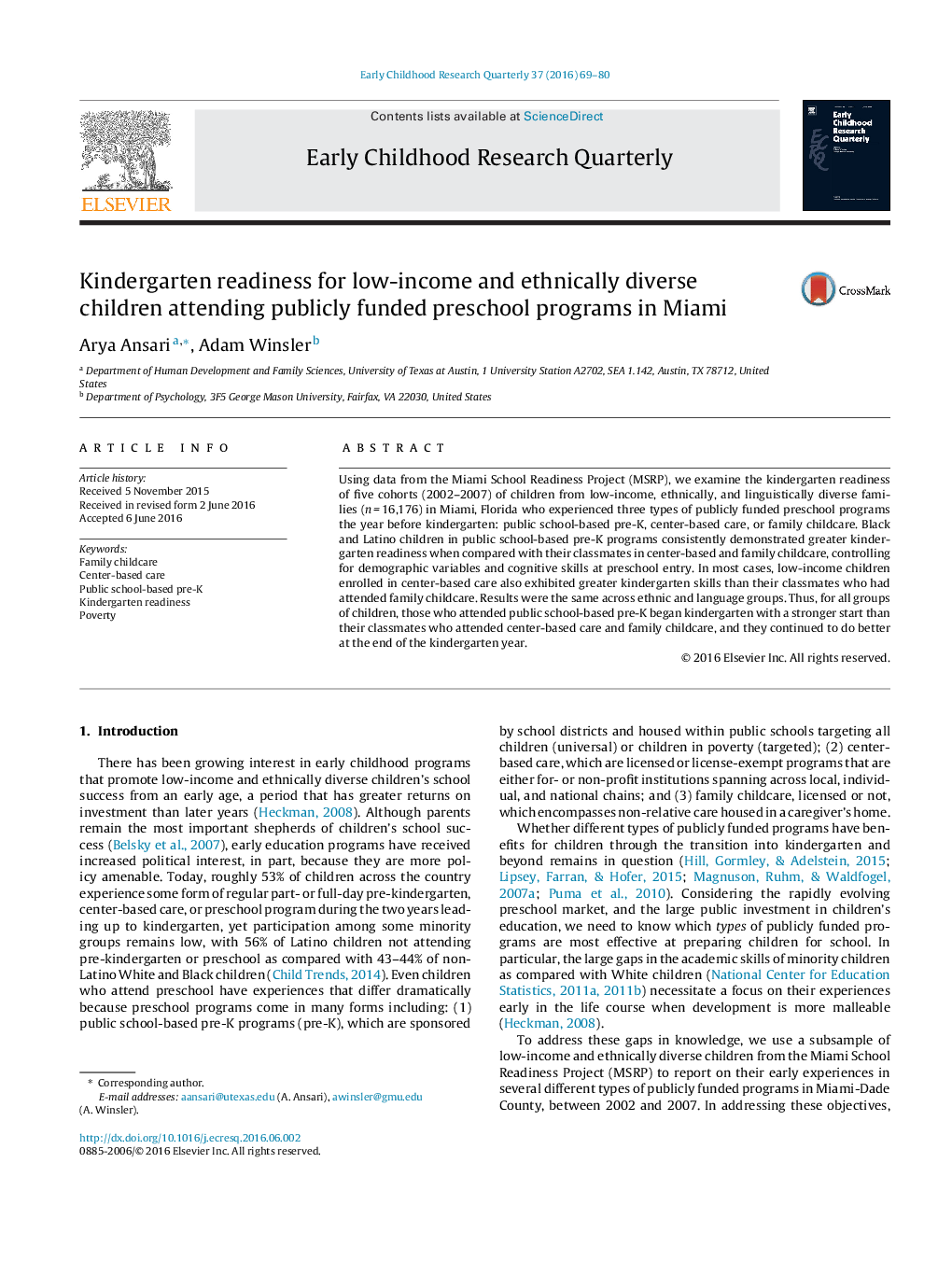| Article ID | Journal | Published Year | Pages | File Type |
|---|---|---|---|---|
| 353635 | Early Childhood Research Quarterly | 2016 | 12 Pages |
•We examined the school readiness of low-income, minority children in Miami, Florida.•At age 4, children attended public school pre-K, center care, or family childcare.•Children in public school pre-K demonstrated the greatest kindergarten readiness.•Children in center care (vs. family childcare) were also better prepared for school.•All children benefitted equally from preschool education.
Using data from the Miami School Readiness Project (MSRP), we examine the kindergarten readiness of five cohorts (2002–2007) of children from low-income, ethnically, and linguistically diverse families (n = 16,176) in Miami, Florida who experienced three types of publicly funded preschool programs the year before kindergarten: public school-based pre-K, center-based care, or family childcare. Black and Latino children in public school-based pre-K programs consistently demonstrated greater kindergarten readiness when compared with their classmates in center-based and family childcare, controlling for demographic variables and cognitive skills at preschool entry. In most cases, low-income children enrolled in center-based care also exhibited greater kindergarten skills than their classmates who had attended family childcare. Results were the same across ethnic and language groups. Thus, for all groups of children, those who attended public school-based pre-K began kindergarten with a stronger start than their classmates who attended center-based care and family childcare, and they continued to do better at the end of the kindergarten year.
